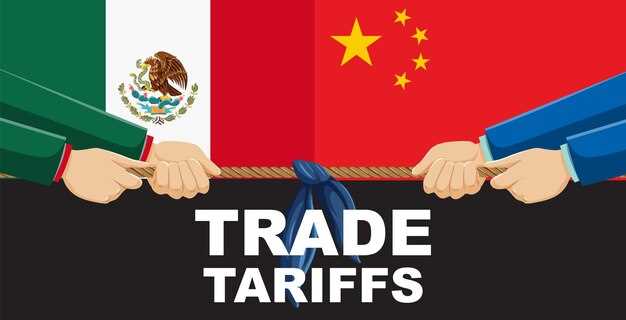Facing a sudden shift in U.S. policy, producers across Asia and beyond confront new duties on many cargo streams; the immediate effect is a rate-driven re-pricing of products and a push to diversify source networks.
To reduce exposure, firms should map product-specific exposure and cultivate certifications that meet source-country requirements; in sectors like fruits and other agricultural goods, certification can unlock favorable treatment under rcep and beyond; subsidies in some jurisdictions can cushion margins, except where prohibited; align pricing with those subsidies unless they are excluded.
Strategic actions include expanding deals with diverse suppliers, including pakistans producers, to reduce concentration risk; currently, multiple lines show relief via regional duty-free preferences for specified product groups; build a risk-adjusted rate schedule and lock in volumes for high-demand cargo such as fresh fruits and other products; if you cant meet the required standards, pivot to other sources.
Operational steps: traceable cargo documentation, including the required labeling, and a quarterly review of rcep implications; whenever new source constraints emerge, shift volumes to alternative suppliers and adjust deals accordingly; ensure product-specific labeling to meet certification requirements and accelerate clearance at ports.
Practical implications for traders and policy makers

Negotiate binding, time-limited caps on surcharges and secure cargo space by contracts with multiple forwarders to stabilize cost paths. Took action to route cargo through indian and thailand hubs to spread exposure and reduce reliance on a single lane. Draft life-cycle scenarios for core inputs and monitor forwarder performance to keep resilience high.
Regulatory guidance should specify how subsidies are applied to agricultural inputs, set clear criteria for avoiding unfair pricing, and outline steps to respond to retaliation across east corridors.
Negotiations should explore avenues with indian and thailand suppliers and with east-based carriers; align regulatory filings with customs timelines to avoid delays. Leverage postal networks to cut last-mile costs and improve delivery times.
Traders should manage life-cycle risks by diversifying supplier bases, maintaining buffer cargo, and using forward contracts to lock price trends for the future.
Forwarders and policy makers should monitor surcharges, route via postal networks for non-urgent cargo, and document input costs to support negotiations and keep pricing fair; also track retaliation risk signals from trading partners and adjust plans accordingly.
Tariffs by sector: which industries face the largest exposure
Prioritize resilience in auto parts, electronics, and agricultural exports where exposure is strongest; establish a buffer, extract data, and apply policy levers to shield revenue and value in the medium-term.
As of august, dozens of sectors show exposure to policy shifts; the heaviest burdens fall on durable goods and agricultural products such as mangoes. To measure risk, compile shipment values and substitution costs, then align with counterparty actions toward diversification. Some inputs are sourced from single-origin suppliers, making punitive actions more likely for those chains; ensure a coordinated response with policies that promote resilience. East-region inputs and irradiation-related components add cost pressures, reinforcing the need to diversify and extract alternative sources.
| 部门 | Exposure share of revenue (%) | Potential cost impact (USD bn) | Medium-term risk | Mitigation actions |
|---|---|---|---|---|
| Auto parts & components | 28 | 12.5 | 高 | Diversify suppliers, near‑shoring, build buffer inventories, engage counterparts |
| Electronics & consumer tech | 24 | 9.0 | 高 | Stock alternative inputs, broaden sourcing to multiple regions, accelerate policy relief where possible |
| Agricultural products (incl. mangoes) | 18 | 4.0 | Medium-High | Expand destinations, improve pre‑shipment testing, build flexible logistics |
| Textiles & apparel | 12 | 2.7 | Medium | Source from multiple mills, maintain alternative suppliers, negotiate clear lead times |
| Machinery & equipment | 10 | 1.8 | Medium-High | Stock critical parts, dual-source where feasible, use flexible manufacturing plans |
| Pharmaceuticals & chemicals | 8 | 1.2 | Medium | Secure alternative suppliers, maintain stockpiles, validate compliant imports |
Outlook and guidance: policy toward sector resilience will likely favor targeted measures over blanket actions since the goal is to protect revenue while maintaining competition. Firms should apply scenario planning, extract lessons from august data, and pursue diversification toward alternative suppliers and destinations. The single best safeguard is a carefully designed buffer, built through regional sourcing and adaptable contracts; date-based reviews with counterparts will help manage costs and preserve value.
Timing and escalation: how announcement dates ripple prices
Recommendation: hedge exposure 2–4 weeks before anticipated policy disclosures; lock bulk orders with flexible delivery terms; coordinate with authorities to ease friction at the farmgate and align with export-oriented supply chains. Engage processors early to verify capacity, ensuring scale and reliability. Recent meeting with suppliers highlights advantages of pre-commitment and tied arrangements, reducing risk of price spikes. This should also include protections for each order to avoid disproportionate effects from a single event.
Through weeks of anticipation, buyers in europe tend to price risk ahead of the exact date, with front-month prices rising 2–5% in the two weeks preceding a noted august disclosure; highlighting how even a hint of diversification or diversion can shift orders and services costs across regions.
Recommendations: maintain flexible sourcing and diversify suppliers to avoid single-source risk; tie long-term contracts to measured delivery windows and floor costs; this should be supported by tcja cost reviews. Believes market participants benefit from pre-commitment, reducing price swings and smoothing margins. Monitor natural swings and diversion routes, and keep a meeting cadence with authorities to align logistics and services, ensuring scale across regions, including europe.
Currency moves and investment: how markets price risk
Recommendation: Apply a disciplined hedging plan that reduces exposure to a single axis without overpaying for carry. Favor a canadian tilt and a diversified mix across exchange-rate pairs, with a blanket of protections that activates at moments of expansion and when risk suddenly spikes. Use forwards and options to cap drawdowns and preserve optionality in shipments and payments flows.
Historically, the price of risk moved in clear bands: USD strength against canadian rose by 5.1% over the last 12 months, while EUR/CAD advanced about 3.2% and JPY/CAD fell around 1.0%. Dozens of data points show that policy signals, not just spot moves, drive cross-country exchange dynamics.
Risks faced include tariff shocks, policy shifts discussed in Paris meetings, and disruptions in shipments from bangladeshi suppliers. These factors can hit payments timing and alter exchange expectations. Before committing, stress-test scenarios across arabia, paris, and other places that influence supply chains.
Strategy note: The opportunities exist in alternative hedging tools: use comprehensive risk models that apply cross-asset correlations; if you see a sudden blow to one currency, you can implement quick rebalancing to preserve capital. The model can apply dozens of scenarios, including disruption in arabia, changes in paris, and shifts in asian supply chains, to identify optimal hedges and alternative funding paths. The framework isnt limited to one locale.
Maintain a frequent meeting cadence between treasury and trading desks; capture efforts to reprice risk before it breaches tolerances, and ensure that counterparty terms remain favorable in canadian and other places across the supply chain.
Supply chain realignment: sourcing, nearshoring, and logistics changes
Recommendation: Shift 20-30 percent of critical input sourcing to nearshore producers over the next 12 months and deploy dual sourcing for the five highest-velocity commodities to reduce risk and meet needs for reliable manufacturing. Establish regional supplier hubs to shorten transit and improve consignments handling.
Nearshoring efficiency: Align supplier bases within the same region to cut cycle times, increase visibility, and ease season planning. This approach yields advantages in time-to-market, lowers transport costs, and improves the predictability of input flows for manufacturing lines. Producers across nearby locales create a more resilient supply chain architecture.
Diversification and regional mix: Add african producers to the input mix where feasible to spread risk and capture additional input streams for production. Noted savings often accompany shorter logistics legs and improved consistency of consignments, especially for commodity lines used in everyday consumption. This strategy also supports multiple sourcing options and helps dissuade single-point failures.
Logistics network design: Reconfigure freight flows through regional hubs, appoint trusted carriers, and consolidate consignments to reduce handling costs. Use season-appropriate lanes to accelerate relief during peak weeks. Diplomacy and immigration considerations shape on-site labor and cross-border capacity, so transparent coordination with partners keeps throughput stable across places.
Demand alignment and risk management: Build a multiple-supplier base to assure supply continuity; adjust inventory and order schedules to match seasonality and consumption patterns. This approach helps producers manage natural variability in demand and reduces the need for costly expediting. just as important, implement real-time visibility and alerting to catch delays before they escalate.
Measurement and governance: Track percent changes in transport times, inventory days of supply, and unit costs by region to gauge progress quickly. Build a partnership with carriers for flexible consignments and relief from congestion; schedule quarterly reviews to ensure adjustments are on track. believe that data-driven decisions outperform guesswork in dynamic consumption cycles.
Implementation plan: Phase the rollout across places with two pilot nearshore locations, then scale to multiple regions. Establish formal partnerships, assign owners, and set clear milestones to measure progress. Monitor immigration and labor policy implications, adjust input requirements, and maintain an agile posture toward international supply volatility.
Compliance, counsel, and risk management: practical steps for firms

Implement a centralized risk framework tied to ustr updates and march duties schedules, with explicit roles for counsel, compliance, and operations.
Indeed, several firms faced significant exposure when schemes aimed at misclassifying commodities or transshipping goods threatened compliance; this framework is effective and applies broadly, including to china. A directive from ustr, which imposes new obligations on duties and classifications, underscores the need for precise controls.
-
Governance and policy: Create a cross-functional risk committee with explicit roles for counsel, compliance, and operations. The policy should reflect ustr alerts and march updates, and it must be documented and approved at the executive level to ensure accountability, with changes required by law incorporated.
-
Supply-chain mapping and due diligence: Identify critical nodes in china and other high-risk regions; require due diligence on schemes that could shift duties or misclassify goods; track transshipped commodities; maintain robust vendor questionnaires. This step enhances competitiveness by reducing interruptions and ensuring line-of-sight onto shipments. For example, map all tier-1 and tier-2 suppliers and conduct site visits where feasible.
-
Classification and valuation controls: Implement a dynamic classification process to ensure duties apply to specific product families; maintain a commodity taxonomy; perform quarterly reviews; use automated checks to flag anomalies. The approach relies on specific product data and supplier documentation.
-
Data governance and documentation: Build a fact-based audit trail with example records for shipments; keep documentation for the period required by regulators; ensure traceability across the supply chain for each claim of duties.
-
Due diligence and training: Deliver training to laborers and managers on duties and compliance expectations; use scenario-based exercises; track short-term retention and understanding. Additionally, mango analogies and practical exercises help retention.
-
Third-party risk management: Require suppliers to disclose schemes to evade controls; perform audits (onsite or virtual) and require corrective action plans; align contracts with warranties and remediation timelines. This reduces risk and protects business continuity.
-
Monitoring and reporting: Deploy dashboards showing significant exposure by supplier, country, and commodity; set triggers for short-term remediation; produce monthly reports to leadership; verify data used in decisions with fact-based inputs.
-
Incident response and remediation: Define response times for red flags; contain and remediate promptly; track losses and outcomes to minimize revenue impact; Document a plan to prevent any scenario where goods or duties could cause a company to lose revenue; maintain an action log for future audits.
-
Continuous improvement and culture: Benchmark with peers, share lessons learned, and update playbooks and training annually; emphasize competitiveness and resilience in procurement and logistics functions.

 Tariff Tango – How Trump’s Trade Moves Are Shaking Up Global Markets">
Tariff Tango – How Trump’s Trade Moves Are Shaking Up Global Markets">
